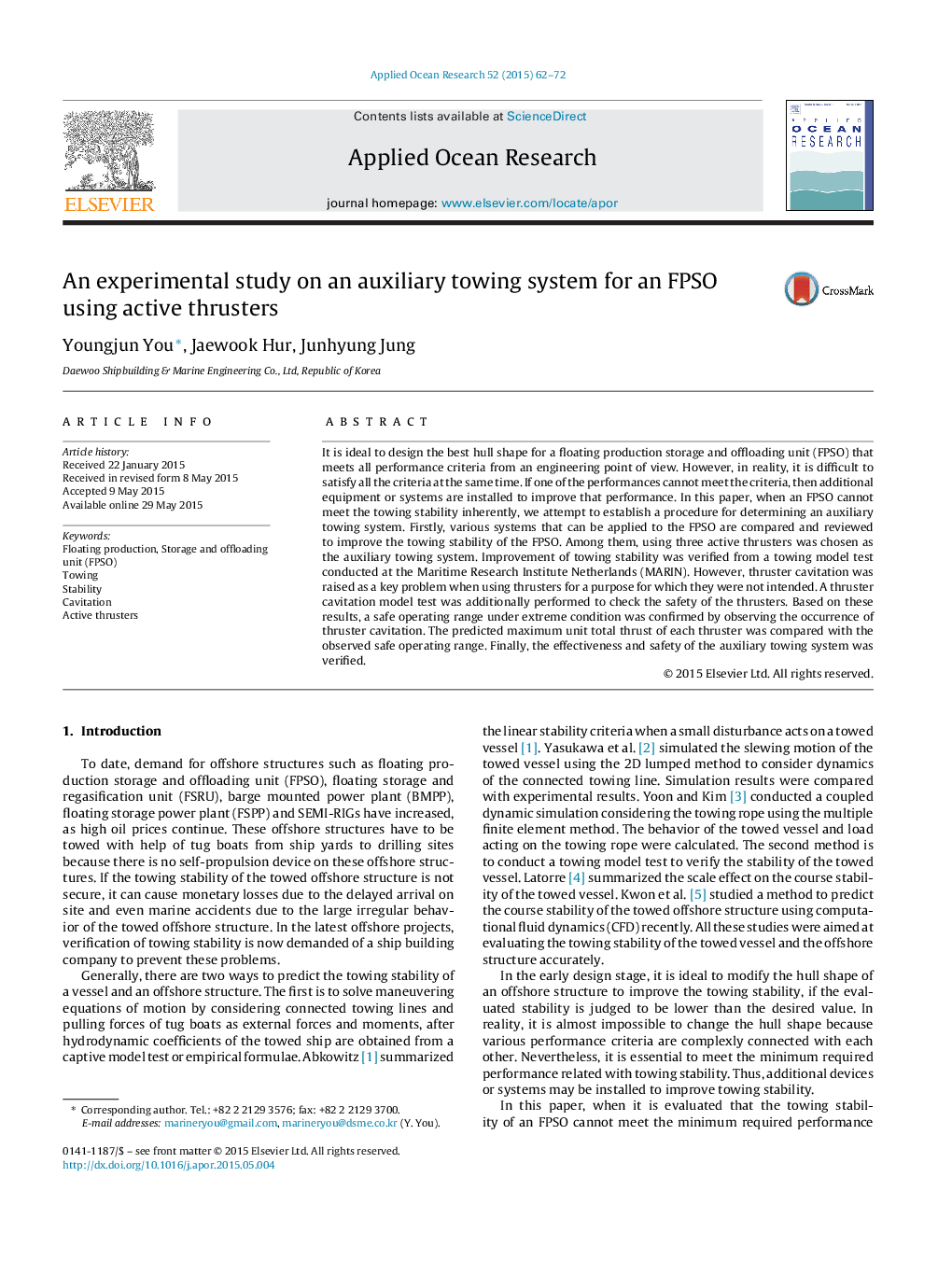| Article ID | Journal | Published Year | Pages | File Type |
|---|---|---|---|---|
| 1719931 | Applied Ocean Research | 2015 | 11 Pages |
•We sought to improve the towing stability of an FPSO without design changes to the hull shape.•We used three thrusters as an alternative way to improve the towing stability.•We verified the safety of a thruster based on the cavitation model test results.
It is ideal to design the best hull shape for a floating production storage and offloading unit (FPSO) that meets all performance criteria from an engineering point of view. However, in reality, it is difficult to satisfy all the criteria at the same time. If one of the performances cannot meet the criteria, then additional equipment or systems are installed to improve that performance. In this paper, when an FPSO cannot meet the towing stability inherently, we attempt to establish a procedure for determining an auxiliary towing system. Firstly, various systems that can be applied to the FPSO are compared and reviewed to improve the towing stability of the FPSO. Among them, using three active thrusters was chosen as the auxiliary towing system. Improvement of towing stability was verified from a towing model test conducted at the Maritime Research Institute Netherlands (MARIN). However, thruster cavitation was raised as a key problem when using thrusters for a purpose for which they were not intended. A thruster cavitation model test was additionally performed to check the safety of the thrusters. Based on these results, a safe operating range under extreme condition was confirmed by observing the occurrence of thruster cavitation. The predicted maximum unit total thrust of each thruster was compared with the observed safe operating range. Finally, the effectiveness and safety of the auxiliary towing system was verified.
